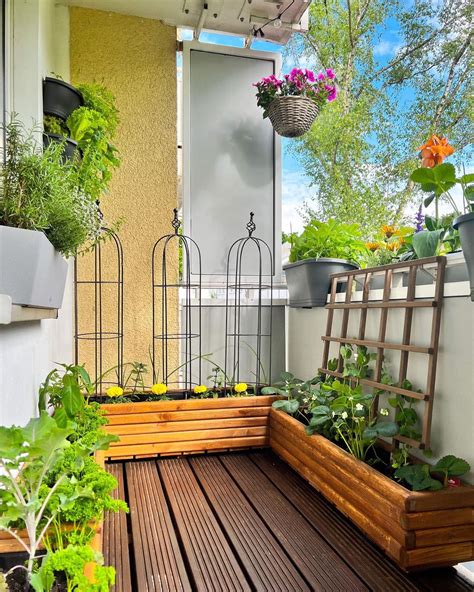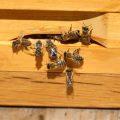Creating a Balcony Garden That Thrives with Wildlife and Pollinators
Are you looking to turn your balcony into a biodiverse haven for wildlife? A well-planned balcony garden can be an oasis for pollinators, birds, and small creatures, even in the heart of the city. By focusing on the right plants, containers, and care techniques, you can foster growth and create a thriving, self-sustaining ecosystem. This article explores the key concepts, historical significance, current trends, and practical applications for building a wildlife-friendly balcony garden.
Key Concepts of a Balcony Garden for Wildlife
Understanding the fundamentals of wildlife-friendly gardening is essential. A successful garden incorporates a balance between biodiversity, appropriate plant selection, and effective garden care.
- Biodiversity: Encourage a variety of species to thrive, increasing the resilience of your garden ecosystem.
- Pollinator Support: Bees, butterflies, and other pollinators play a critical role in plant reproduction and the health of your garden.
- Containers: Choose the right containers that promote healthy root growth and proper water drainage.
- Sunlight & Watering: Understand the specific needs of each plant in terms of sunlight exposure and watering frequency.
Historical Context of Balcony Gardening
The concept of gardening in small urban spaces dates back to ancient times. Cities like Babylon, with its famed Hanging Gardens, used architectural innovations to bring greenery into dense urban areas. Today, modern balcony gardening has evolved to embrace principles of sustainability and wildlife conservation, helping urban dwellers support ecosystems in confined spaces.
Current State Analysis
With the growing trend of urban gardening, more people are transforming their balconies into wildlife sanctuaries. Many city dwellers aim to combat declining pollinator populations and decrease the effects of habitat loss by providing small pockets of greenery. Balcony gardens contribute to environmental sustainability and enhance personal well-being.
Practical Applications for Balcony Gardening
For a balcony garden to attract wildlife, careful planning and execution are essential. Here are some practical tips:
- Plant Selection: Native plants are best suited for attracting local pollinators. Examples include milkweed for monarch butterflies and lavender for bees.
- Container Choices: Use eco-friendly containers with good drainage. Recycled materials or terra cotta pots work well for supporting plant health.
- Water Sources: A small bird bath or shallow dish of water can attract birds and other wildlife.
- Sunlight and Positioning: Consider your balcony’s exposure to sunlight. Place sun-loving plants in the brightest spots and shade-tolerant plants in corners that receive less direct light.
- Soil and Fertilizers: Use organic, peat-free compost and avoid synthetic fertilizers that could harm wildlife.
Case Studies: Successful Wildlife-Friendly Balcony Gardens
Here are a few real-world examples of how small balcony gardens have successfully attracted wildlife:
| Location | Garden Setup | Wildlife Attracted | Key Lessons |
|---|---|---|---|
| New York City | Pollinator plants in vertical containers | Bees, Butterflies | Maximize vertical space |
| London | Mixed native plant species with bird bath | Birds, Insects | Water sources are crucial |
| Tokyo | Shade-loving plants in small containers | Small insects, birds | Adapt to available light conditions |
Stakeholder Analysis
There are several stakeholders involved in balcony gardening:
- Urban Residents: Individuals seeking to enhance their connection with nature and improve the aesthetic value of their living space.
- Environmental Organizations: Advocates for increasing biodiversity in cities and promoting green spaces.
- Wildlife Experts: Provide guidance on the types of plants and garden setups that support local wildlife.
Implementation Guidelines
To create a wildlife-friendly balcony garden, follow these steps:
- Start by assessing your balcony’s sunlight exposure and space constraints.
- Select a variety of native plants that cater to local wildlife needs.
- Use vertical space wisely with shelves or hanging baskets to maximize planting area.
- Include water sources and avoid using harmful chemicals that can deter wildlife.
- Maintain your garden regularly by pruning, watering, and replacing plants as needed.
Ethical Considerations
It is crucial to ensure that the garden does not inadvertently harm the local ecosystem. For example, avoid invasive species that could disrupt native plants or wildlife populations. Additionally, synthetic fertilizers and pesticides should be strictly avoided to protect pollinators and birds.
Limitations and Future Research
While balcony gardens can support wildlife, they are limited in size and scope. They cannot fully replace natural habitats. Future research should focus on how to scale up balcony gardening efforts and incorporate them into broader urban planning initiatives. Additionally, studies on how different plant combinations attract various wildlife species could further enhance the efficacy of such gardens.
Expert Commentary
Experts agree that creating a wildlife-friendly balcony garden offers a practical way to improve urban biodiversity. According to urban gardening specialist Dr. Jane Forrester, “Small spaces, when thoughtfully designed, can become powerful micro-habitats that support pollinators and birds. Even a few well-chosen plants can have a significant impact.” Horticulturist Michael Reece adds, “The most successful balcony gardens combine native plants with innovative design solutions like vertical gardening to make the most of limited space.”
Focus Words & Phrases
When planning a balcony garden for wildlife, the following terms are essential:
- Wildlife
- Pollinators
- Plants
- Containers
- Care
- Sunlight
- Growth
- Gardening Tips
- Biodiversity


